How to Care for a Jade Plant
The jade plant, aka Crassula, is one of the easiest succulents you can grow. This is not an exaggeration – they practically take care of themselves. It’s why they’re perfect for beginners and people who prefer low-maintenance plants.
Sometimes called the money plant, lucky plant, and money tree, they fit seamlessly into succulent gardens, houseplant collections, and outdoor gardens, too.
(This post may contain affiliate links).
As a succulent enthusiast, jade plants will forever have a special place in my home because they’re both beautiful and resilient – the perfect combination.
They’re also unique to many other succulents in that they have woody stems that grow from thick trunks.
This, along with their fleshy leaves, helps to give them a tree-like appearance as they mature. It’s also what makes them so drought-tolerant.
They can grow up to several feet tall and many inches wide, which is why people love growing them outdoors as a garden focal point (like my grandma does!).
But if you’re looking for a new plant to keep inside your house, the jade plant grows very well indoors, too, as long as they get enough light.
You can eaily find young jade plants that are sold in small sizes, including two and four-inch pots, at your local garden center. Plants that small look would beautiful on tabletops, coffee tables, and desks!
You can also find different varieties of jade plants in garden centers, which is great because they each have a unique look. I think I now own most varieties!
Some of those varieties include Silver Jade and Common Jade aka Crassula ovata, which features red tips along the leaves when sun or water- stressed (shown below- I call it my jade tree).
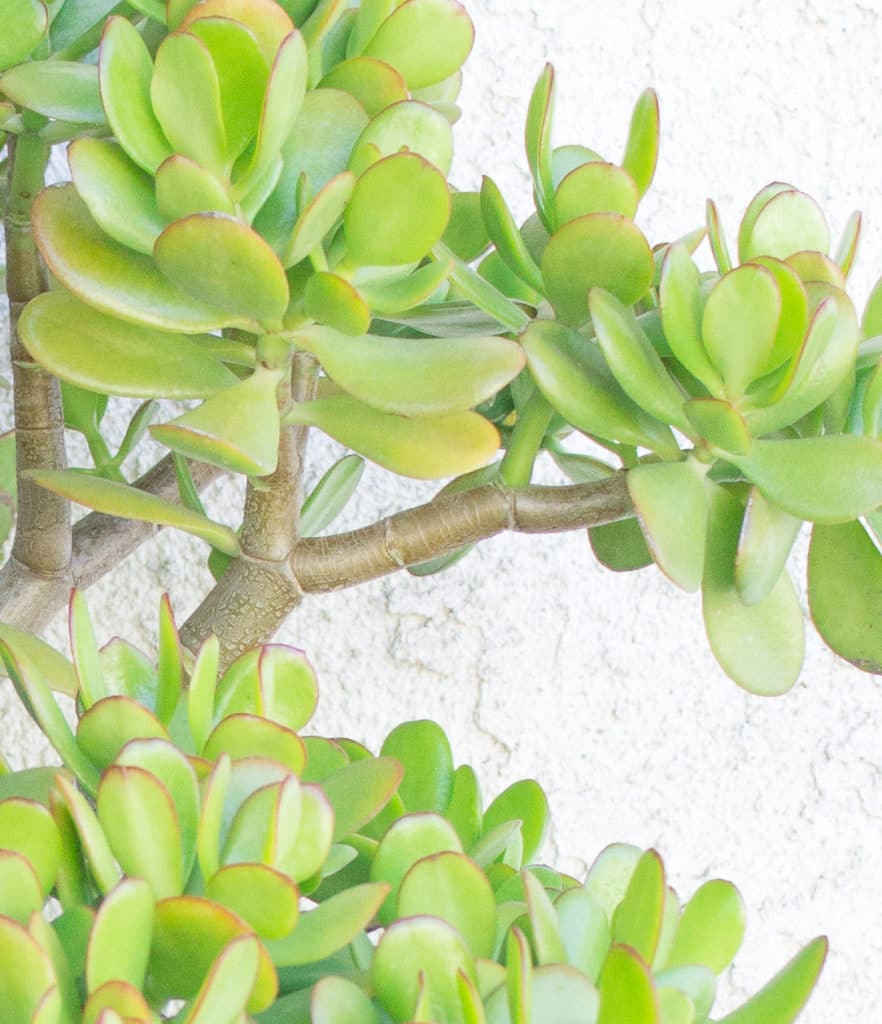
You might also find a variegated jade plant, which features green-colored leaves mixed with streaks of cream.
This is my favorite; I think it’s stunning and it’s also not that easy to find in stores, which makes it more special in my eyes.
If you can find a variegated jade plant, I highly recommend buying it because it’s so beautiful and will stand out in your garden.
Known to thrive in zones 9 to 11, jade can be grown successfully in colder zones, too, if grown as an indoor plant or brought indoors during the winter.
Now let’s talk about proper care, below. I know I said the plant can practically take care of itself BUT if you want it to look its best, the tips below will really help.
How to Plant a Jade Plant
Like other succulents, jade plants do not like to sit in overly-moist soil.
In fact, soggy soil can cause root rot and eventually kill your plant, which is why planting your jade plant in cactus mix, or succulents soil is best.
Why? Soil that is specifically made for succulents includes particles such as sand, pumice, and twigs that helps water drain quickly and easily.
Remember, fast-draining soil is key when growing any type of succulent.
If using regular potting soil, try mixing in some pumice to help with drainage.
As far as pots go, opt for one that has a drainage hole. Terra cotta pots make excellent pots for succulents because they allow for good air circulation and they wick away moisture.
If your pot doesn’t have a drainage hole, be more conservative when watering to avoid over-watering.
The pot you choose should be large enough to accommodate the jade plant, but not too large that it overwhelms the plant.
Make sure the base of the plant sits atop the soil and parallel to the top of the pot – you don’t want any leaves touching the soil!
Fill in the side of the pot with soil, and gently press it down to help it settle into place.
Wait a few days before watering your repotted plant; this will give the roots time to settle.
Plus, if any roots were damaged in the planting process, it’ll give them time to recover before soaking up any water and potentially rotting.
How to Water a Jade Plant
Properly watering a jade plant is key to helping it thrive. If you want a plant with healthy oval-shaped leaves that look full and lush, then you need to give it enough water.
While it can survive in dry conditions, the plant will eventually show signs of dehydration if you neglect its watering needs for several weeks at a time, especially during the summer months.
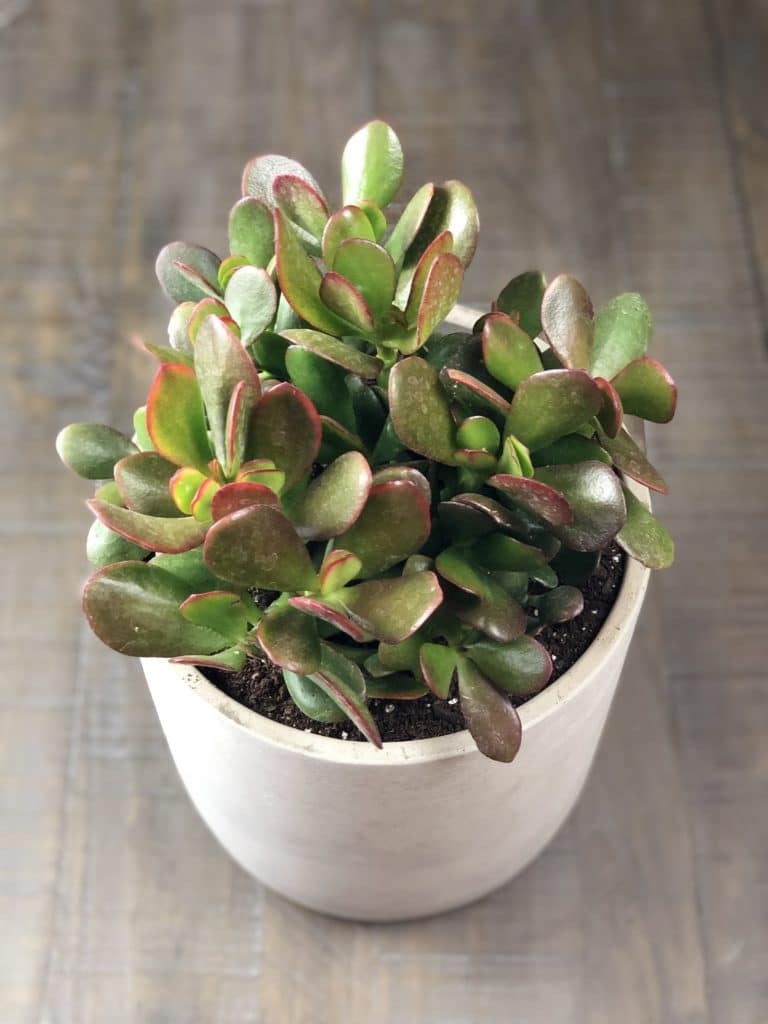
These signs include wrinkly, shriveled-up leaves that start to droop and then fall off the thick stems.
However, like all succulents, jade plants are sensitive to overwatering. Overwater it, and you could end up with a rotting root system.
Indoor jade plants are especially sensitive to overwatering because they don’t get many hours of direct sunlight like outdoor plants do.
Always be mindful about not letting your plant sit in excess water for a very long time!
This is why a well-draining soil is so important; it helps water pass through the soil instead of holding onto it.
Signs of overwatering jade plants include yellow leaves, transparent leaves, gnats, and leaf drop.
If you notice these signs the best thing you can do is stop watering until the soil is completely dry from the top to the bottom of the pot.
As with other succulents, water your jade plant when the top of the soil is dry to the touch.
To test how dry the soil is, simply stick your finger into the soil about an inch deep.If it feels dry, then it’s time to water.
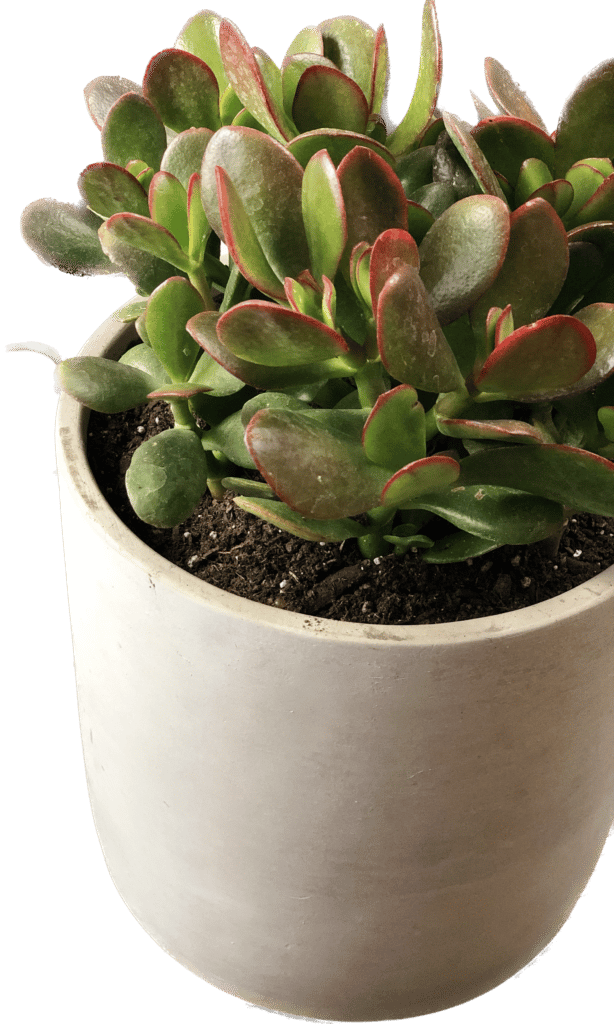
If it feels slightly moist, then give it another two days or so before your water.
A general rule of thumb for watering jade plants is less is more.
When you feel that the soil is dry, grab a watering can and slowly pour room-temperature water onto the soil, not the actual leaves. (The roots need water, the leaves do not!).
Once you see water escape from the drainage hole, it’s time to stop watering; this will be your cue that the soil has received enough moisture.
Wait a few days between waterings – I personally water my jade plant about once a week.
How often you water your plant will depend on several factors including the climate and humidity inside your home, the season, and the outdoor temperature if the jade plant is being grown outdoors.
Generally speaking, you’ll only need to water your plant every few days. Plump leaves are healthy leaves, which is a great sign that you’re watering correctly!
Jade Plants Need Sun
While jade plants don’t ask for much in the way of care, they do require ample sunlight in order to look their best. These plants can survive in low light, bright indirect light, and full sun.
This means you should place your container or pot in a spot that gets four hours of sunlight a day, at the very least.
Growing them in less than four to six hours of sunlight will result in less-vibrant leaves and slower growth.
If you want to grow a lush, green jade plant with rich color that produces several branches of thick leaves, then placing it in full sun is necessary; this is why this plant does so well outdoors during Spring and Summer.
If growing indoors, place the plant near a window that lets in plenty of light.
Fertilizing Jade Plants
Jade plants are slow growers so they don’t need to be fertilized but they can definitely benefit from a little fertilizer, as long as it’s applied at the right time and in the right amounts.
Always opt for organic fertilizers, as they’re more gentle for the plant and better for the environment, too.
I prefer using a kelp or seaweed liquid fertilizer, which is what I use to fertilize my other succulents.
Using a liquid or diluted succulent fertilizer makes it easier on me because all I have to do is pour it into my watering can whenever I water.
If you’re growing jade plants directly in the ground, you can also use a granular fertilizer to sprinkle over the soil, which is a very low-maintenance way to fertilize.
The best time to add fertilizer to your jade plant is during the growing season; never fertilize succulents during fall or winter because that’s their dormancy phase and they’re not ready to start the growing process.
Ample sunlight is very important when fertilizing because, without it, your plant will grow leggy and stretched out in search of more light.
This is why fertilizing under right conditions is a key part of jade plant care, so make sure to pick a sunny spot in your home or garden first. Indirect sunlight will do if you can’t find a spot that gets full sun.
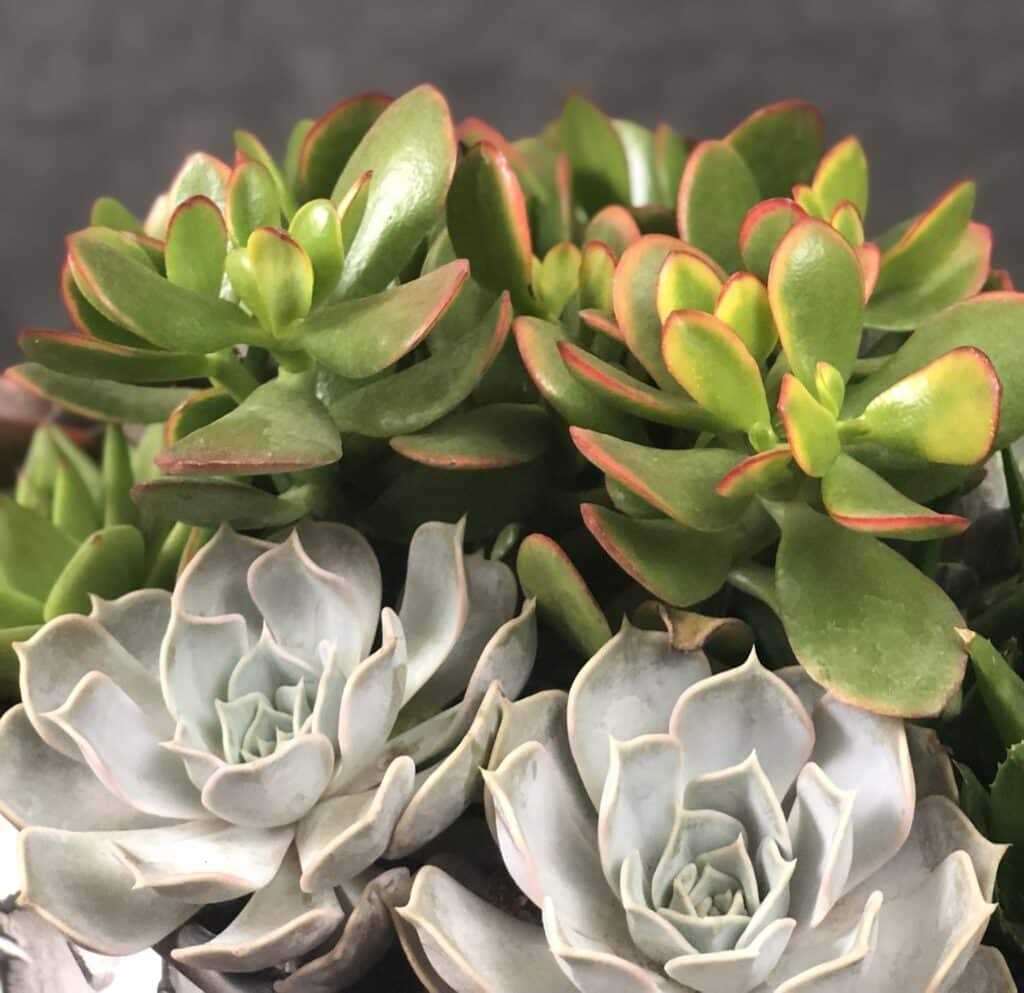
You can either give your plant a dose of fertilizer (at half strength from what the bottle says is generally a good amount) in early Spring or once every month during Spring and Summer.
To keep plants small and compact, skip the fertilizer.
Also, make sure you only fertilize when the soil is moist – applying fertilizer to dry soil can burn the leaves, so give the soil a drink of water before adding fertilizer.
Quick Pruning Tips for Crasula Ovata
When growing jade plants, you don’t want to neglect pruning them – it’s what helps give them a mounded shape.
Pruning will also promote new growth.
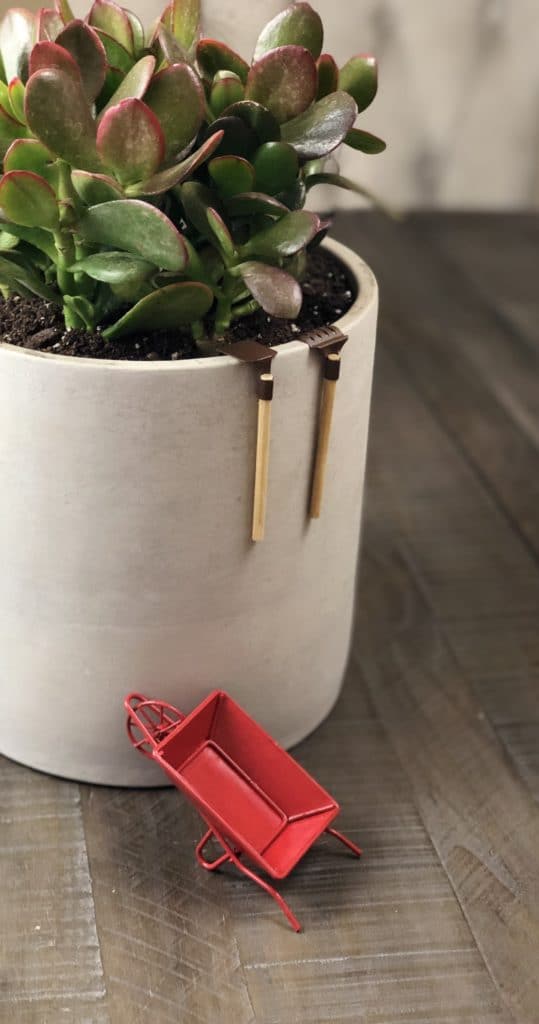
To ensure a shrubby, rounded shape to your jade plant, simply take your pruners and snip off any leggy branches that are sticking out of the plant or growing at a different rate than the rest of the plant.
Leggy stems with large gaps between the jade plant’s leaves are often the result of too little sunlight – it’s a process called etiolation and very common in succulents.
If your jade plant isn’t getting enough bright light, it will begin to stretch itself toward the nearest light source, like other succulent plants do, which will give it a stretched-out appearance that people like to avoid.
It’s an easy process that won’t take much time at all!
I hope this growing guide has given you a better understanding of jade plants and what they need in order to thrive in your home or garden!
I’m sure you’ll cherish it as part of your succulent collection! Good luck!
WANT TO LEARN MORE ABOUT SUCCULENT CARE?
Check out the posts below for more information about succulents and houseplants:
Growing String of Bananas Plant: How To Care Guide
How to Care for Succulents so They Stay Healthy and Happy
How to Water Succulents
Best Full Sun Succulents for a Beautiful Outdoor Garden
How to Care for an Anthurium Houseplant
How to Care for a Pothos Plant
How to Fertilize Succulents
How to Propagate Succulents from Leaves
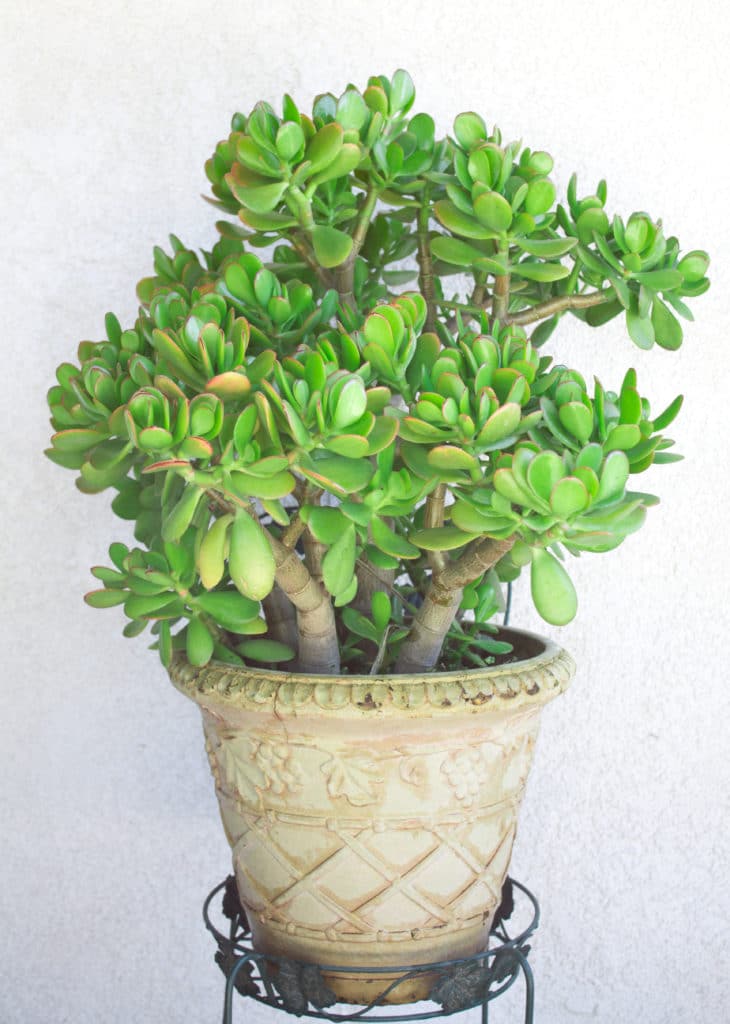
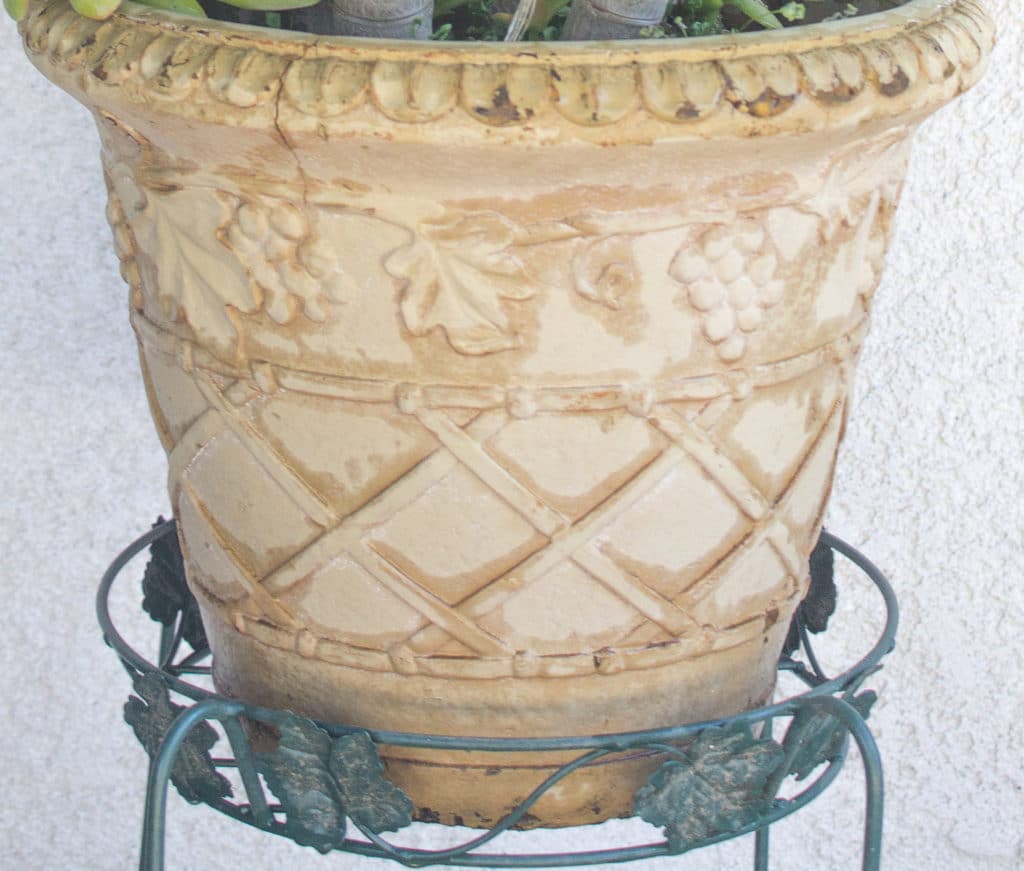

Thanks for the tips. My jade plant has shed all it’s leaves, and now I think it’s because if less sunlight and more water.
My Jade was doing great and one day started losing its leaves, It is not rotting, just perfect leaves dropping off. I did not change the location or watering. Can you give me a reason? I just do not know.
Hi Patsy,
This can happen to jade plants when they’re not getting enough water, especially if they’re being grown outdoors. Summer is their active growing season, it’s when this plant produces more leaves and shoots, so it needs more water than it usually does. I would try watering it more often to see if it solves the problem. Just make sure it has good drainage. Good luck!
I purchased a Jade plant and looks like it needs to be repotted.But its fall so can I repot this Jade plant in a new pot?
Go ahead and repot!
My jade plant has been in the same pot for years. Should I repot it with fresh soil? It is winter now so maybe I should wait until spring?
Waiting until Springtime is usually best. Choose a pot that’s not too much larger than the current pot and use fresh cactus mix. Good luck!
Hi I am very confused. The photos of your Jade plant look exactly like a Portulacaria which is indigenous to South Africa. They are apparently excellent carbon collectors and have the ability to absorb free carbon from the atmosphere. It is noe being planted extensivlely in frost free areas as it has the ability to absorb more carbon than most other plants.
Hi Joy,
The leaves on a jade plant are much larger than the leaves on the Portulacaria plants. Jade are more oval-shaped whereas the leaves on the elephant bush (Portulacaria) are small and round. That’s a good way to note the difference. Side by side, they look very different from each other.